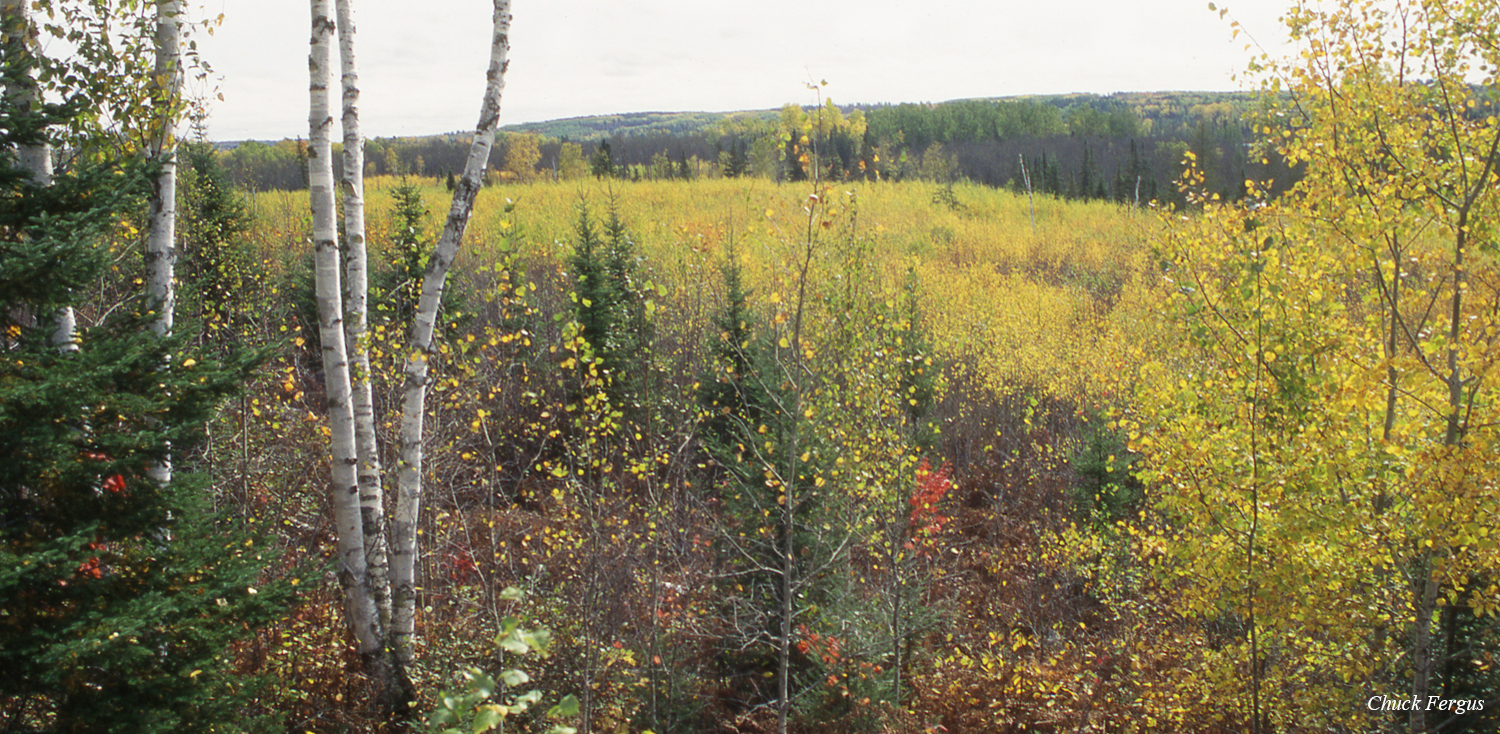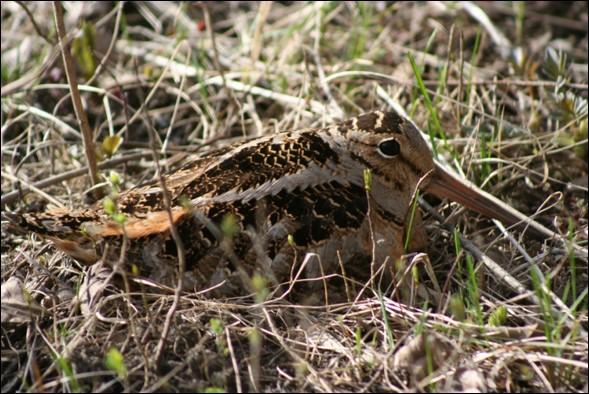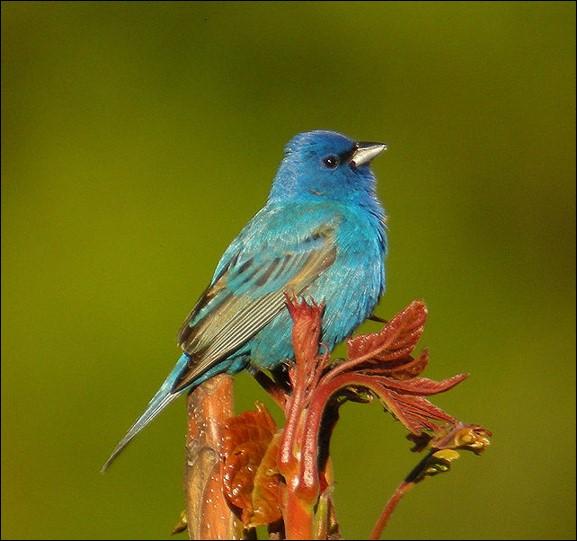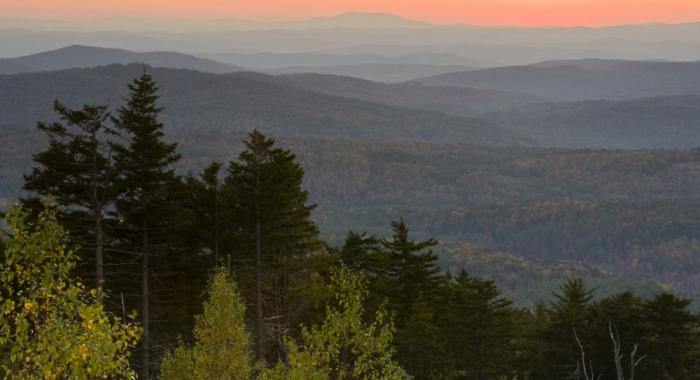Stacie Powers, Forest Society Easement Steward
- Tags:
- Wildlife,
- Conservation Easements

Young forest regenerating in a clear cut. Photo by Chuck Fergus
When you imagine a forest that is full of wildlife, you may imagine a forest that consists of really old and large trees. However, the largest diversity of wildlife will be found in dense thickets with trees no older than ten years old! In this habitat you will find the largest array of wildlife because of the diversity of forbs, shrubs, and young trees. These are what we call young forests. These habitats can be created in different types of landscapes all over the state.


Young forests, including shrublands, used to be created through natural floods and fires. Nowadays, this habitat is no longer being created as it once was because we have controlled natural disturbances and have developed many areas that used to be young forests. The NH Fish and Game is looking for landowners who may be interested in implementing habitat restoration work on either forested tracts or fields, especially those with over 20 acres. “In aggregate, we are hoping to eventually have approximately 15% of our forest in various stages of young successional forest or shrublands; right now we have only about 5% or less in many areas,” said Wildlife Habitat Biologist Tom Brightman.

If you are interested in young forest habitat restoration and management, you can contact Tom Brightman, Wildlife Habitat Biologist, at thomas.brightman@wildlife.nh.gov or 603-271-5860.
Some resources available to learn more about young forest habitat:
Young Forest Project https://youngforest.org/
New England Cottontail https://newenglandcottontail.org/
American Woodcock Management https://timberdoodle.org/
NH Fish & Game Small Grants program specifics https://www.wildlife.state.nh.us/habitat/small-grants.html

Conservation Easement Stewardship at the Forest Society
For every conservation easement the Forest Society accepts, we make a commitment to the landowner that we will protect the conservation values of their property forever.
